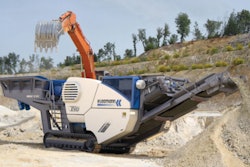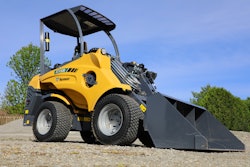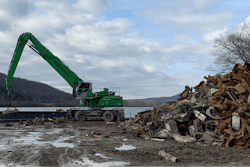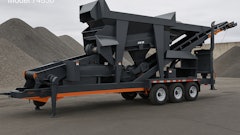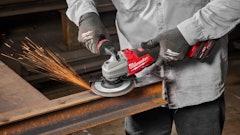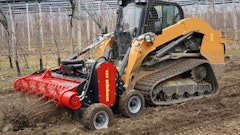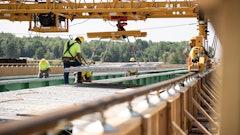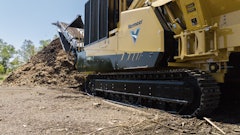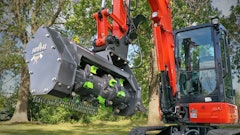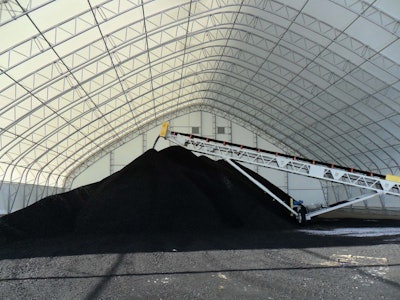
It’s no surprise that asphalt manufacturing is becoming one of the fastest growing industries in the United States. With the market size growing on average of 1.8 percent annually since 2016, many are trying to grow their share of the industry by boosting their efficiency and profitability. Perhaps one of the most overlooked aspects of a facility is the structure operations are run from, and unfortunately due to some of the old structures found on facilities across the country, productivity and efficiency is often hampered.
Operations truly looking to grow have reckoned with this inefficiency, and because of this, fabric structures are becoming increasingly popular. Fabric structures present an ideal building solution for businesses of all kinds, but they work particularly well for asphalt, because of their superior RAP piles storage, functionality and overall accommodating design. These factors make integrating a fabric structure into just about any facility a great choice, so let’s explore them with more detail.
Proper RAP Storage Increases Profits
Arguably one of the most important aggregate materials being handled regularly is reclaimed asphalt pavement (RAP). Every year the United States produces 45 million tons of recycled asphalt, which is highly sought after since it reduces the need for virgin asphalt. Unfortunately RAP piles can be significantly affected by rain and moisture, like many other aggregate materials. Leaving RAP piles uncovered can be a costly mistake; RAP with 20 percent moisture can potentially cause conveyors and feeders to jam, reducing productivity, and this also can boost fuel costs for drying. Furthermore, if these piles become compacted, companies can lose significant profits on the material, so clearly proper storage is an essential factor for a successful operation.
Since moisture in RAP piles can affect the profit potential, companies opt for a structure to keep them covered. Operations are quickly learning that fabric buildings provide a unique set of benefits. Some fabric buildings have natural ventilation inherently worked into their design. With the option to have open end walls, ridge vents, fans, and extra-large entry ways, fresh air can constantly be introduced to the structure. When purchasing a fabric structure, users should also look for a structure that features a climate-sensitive cover. This will keep the structure warmer in the winter and cooler in the summer, further helping to limit the proliferation of moisture.
Keeping Equipment Safe
There’s no doubt that asphalt operations depend on heavy machinery and equipment, and keeping this gear properly stored in working condition is essential. Fabric structures make the perfect on-site workshop. Many fabric buildings come with open floor plans that lack internal support posts, making them ideal for maneuvering machinery within the structure.
Many asphalt companies conduct a number of paving jobs during a year, requiring the costly and time-consuming transport of the appropriate heavy machinery and crews. While this process is required to correctly prepare a jobsite, if a vital piece of machinery or equipment were to suddenly break down and need to be brought back to a shop for repair, it could severely affect the project’s timeline and profits. Integrating a workshop into an operation like this can be a huge help, and also a cost-effective way to keep fleets fully functional. A fabric structure can also be designed to provide additional storage, further helping to keep expensive machinery and vehicles protected and out of inclement weather.
Fabric structures have a user-friendly design that can often meet any jobsite or storage requirement. One aspect that has been particularly appealing to asphalt companies is the fact that many fabric structures have minimal foundation requirements. While fabric buildings can be mounted on traditional concrete foundations, some companies offer different anchoring options that can significantly reduce the cost of the building.
One foundation option to look out for is a helical anchoring system. This type of foundation requires little to no site work since concrete doesn’t need to be poured. Instead, anchors are drilled directly into the ground, creating a secure hold on the structure that can be used on both a temporary or permanent basis. This type of foundation is great for a company that has long-term projects, as a structure can be erected quickly and easily relocated at the end of the project. For this type of application, helical anchoring systems are great, because when they are removed from the ground, the surrounding environment isn’t disturbed and able to go back to how it was previously.
Fabric structures are a versatile building solution that can meet the needs of many asphalt operations. For companies looking to improve their efficiency and productiveness, a fabric building can offer a superior storage environment and a workplace for a number of jobs and tasks. Best of all, fabric structures feature user-friendly and cost-conscious design elements that can boost an operations profitability.
Brett Bodzinski works for ClearSpan Structures. For over 40 years, ClearSpan has been providing the aggregates industry with innovative building solutions. For more information visit www.clearspan.com




